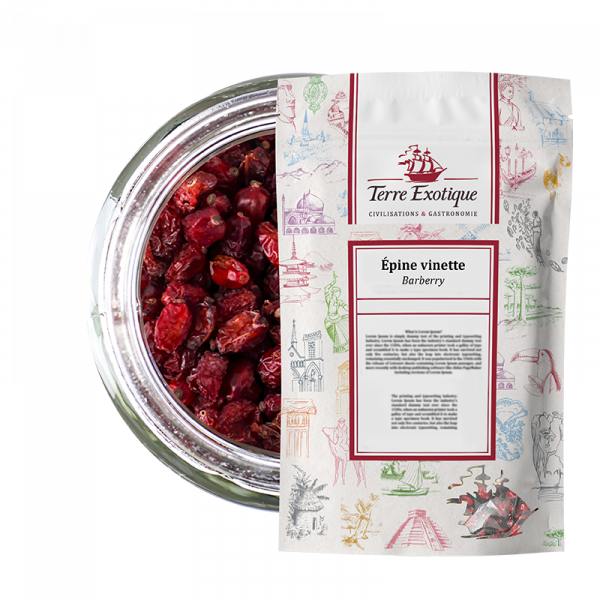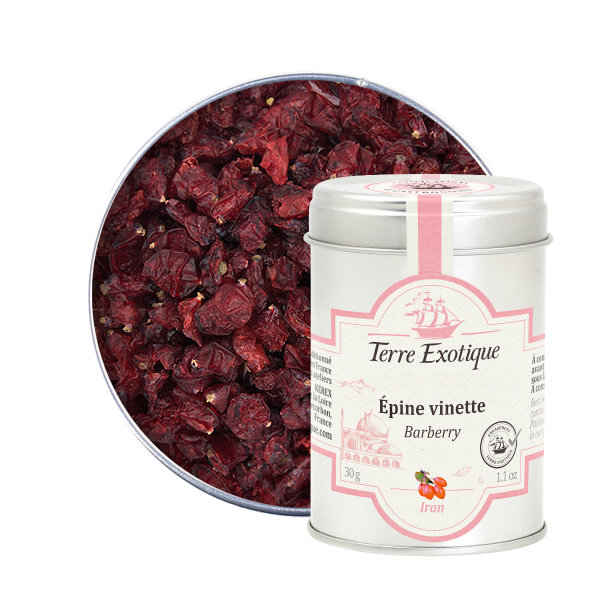



How to Use Barberries in Your Dishes?
Barberries are small berries with multiple uses, pairing well with both sweet and savory dishes.
Some Suggestions for Using Barberries
Barberries add a touch of zest and originality to semolina cakes, loaf cakes, crumbles, or even with chocolate. They also enhance your jams and jellies and pair well with other dried fruits. On the savory side, barberries go perfectly with game and roasted meats. In the Khorasan region of Iran, an area well known to saffron lovers, barberries are traditionally dried and then mixed with fish, eggs, white meats, and rice. A prime example is the traditional Iranian recipe “zereshk polow,” rice with chicken and barberries. Barberries can also be used in beverages. Combined with green anise and star anise, they make a healthy and light infusion. They can also be soaked to make wine. Our tip: we recommend rinsing and sautéing them in butter before using them, to rehydrate them. For optimal preservation, you can store them in the freezer.
The Tangy Flavors of Barberries
Known for their sweet-and-sour flavor and tangy taste, barberries brighten both sweet and savory dishes! They can replace raisins or cranberries, adding a touch of originality to your dish.
Barberries and Their Botany
How Do Barberries Grow?
Originally from Iran, the botanical name of barberries, also called “zereshk,” is Berberis vulgaris. The shrub can grow up to 3 meters tall and easily thrives in various types of soil. The small berries form clusters and are only edible once they are fully ripe.
Barberries in France
An essential ingredient in Iranian cuisine, barberries were systematically eradicated from French fields during the 19th century. This was because they promoted the spread of wheat rust, a disease despised by farmers. As a result, barberries only persisted in mountainous areas of France where they were used for their green and red berries, leaves, and bark.
| Allergen | Absence |
|---|---|
| Genus and botanical species | Berberis vulgaris |
| Ingredients | barberry. |
| Possible traces of: gluten, soy, milk, peanut, nuts, sesame, sulphur | |
| dioxide. | |
| Nutritional Info | VN Energie pour 100 g (energy for 100g) : 1384 kJ / 327 kcal VN Matière grasse (fat) : 1 g Dont acide gras saturés (of which saturated fat) : 0.4 g VN Glucides (carbohydrate) : 63.6 g Dont sucres (of which sugars) : 46.6 g VN Protéines (protein) : 3.4 g Vn Sel (salt) : 0.05 g |
| TRACES EVENTUELLES D'ALLERGÈNES | céleri, sésame, moutarde, fruits à coques. |
 Français
Français 